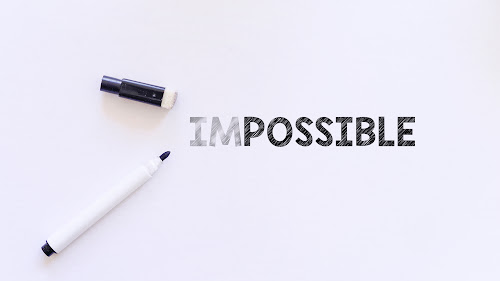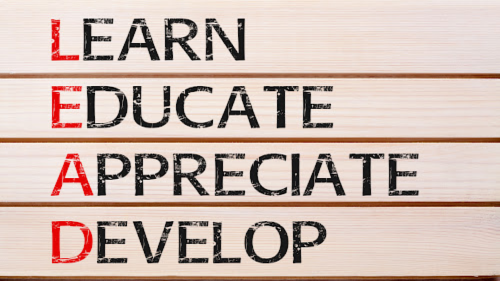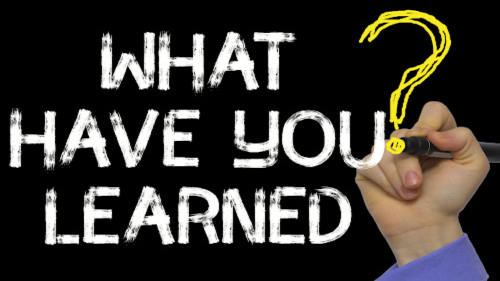The field of distance learning continues to evolve, not just from a technological perspective, but also by the mode of delivery for online classes. When this field was first developing in the early 2000s, one of the primary concerns was related to the ability of this form of teaching to replicate traditional classroom learning.
Over time most online schools included some form of instructor-to-student interaction as part of the curriculum, typically through asynchronous discussions, thereby making it possible for students to still experience many similar elements of a traditional classroom. If there were still any lingering doubts left today about an ability to learn effectively in a virtual environment, the pandemic has helped to eliminate them.
The ongoing evolution within the field of distance learning has been the development of competency-based education, or learning specific skills and competencies to meet course-specific objectives. This is changing the field of higher education, specifically courses and curriculum.

What are highlights of these competency-based programs?
The following are generalizations of the competency-based programs I observed to date.
A. There is no discourse built into the courses. Students are taking self-paced courses, similar to correspondence-style courses from the 1970s.
B. There are no daily or weekly interactions required between instructors and students, which means there is never an opportunity for instructors to engage students with Socratic questioning.
C. The lack of instructor-to-student interactions also eliminates the power of words that traditional online instructors can utilize daily and/or weekly. Traditional online instructors have an opportunity to motivate and encourage students through the power of their words.
While there are going to be some students who are well-suited for this mode of learning, the human element of learning can still be transformative for all students who are able to interact with an instructor on a regular basis, especially when an instructor is highly engaged in the learning process. That may be missing from a competency-based course.
The traditional online classroom, with mandatory instructor-to-student interactions, requires an instructor to be present, available, and responsive to the needs of their students. It is possible for an instructor to be minimally present and only when contractually obligated to do so; however, schools and students expect much more from instructors, and minimal engagement is rarely tolerated. This puts the onus on instructors to learn to become highly effective within a virtual environment, interacting with students they cannot see, while communicating primarily through non-verbal classroom messages and posts.
Which is most effective for learning? Perhaps you’ll find out as you learn from my 18+ years of experience in the field of higher education and distance learning. I’ll also share some strategies for helping you, as an online instructor, enhance your interactions with students.

Why the Need for an Instructor?
Consider the student who can memorize information long enough to pass a test, or grasp information well-enough to write a paper sufficient enough to be evaluated by a grader. From a cognitive perspective, you can ask: Has there been enough interactivity involved to cause information to become knowledge, and more importantly, has there been enough interactivity involved to cause knowledge to be transferred from short-term to long-term memory? These are the questions I ask of anyone who is developing a course, regardless of the modality of the course. As a curriculum author I have to ensure students will not just be completing busywork, and instead, complete authentic tasks which lead to cognitive development and retention of knowledge. Tasks must also be applicable and relevant to the real world, which an instructor can help promote through direct interactions.
When students are involved in a classroom environment, be it online or a traditional on-ground campus, they are provided with an opportunity to discuss course concepts or interact with the information studied in greater depth. This makes the learning process transformative, as it helps to build the neural pathways necessary for long-term retention of the knowledge. The reason why is the added context provided through discourse, which transforms information into usable and relevant knowledge, to be used now, stored in long-term memory, and called upon later. The most essential element of class discussions, the person guiding the ongoing discourse, is the instructor.
Developing a Competency versus Learning and Acquiring Knowledge
I can begin this analysis from the perspective of the student and focus first on the reason why they are enrolled in a degree program. For most online students, who are often referred to as non-traditional students, they have a specific goal or purpose in mind. In other words, they are not just enrolled for exploratory purposes. They are either seeking to advance their career, change careers, continue with their professional development, or gain career-specific knowledge to specialize in their career field. The expectation is they will be able to graduate from the program and immediately apply what was learned to their career, for whatever the initial purpose or reason was for enrolling.
For online schools that are strictly competency-based, and offer no required instructor-to-student interactions, the expectation is that by the end of a “course” the students will have demonstrated mastery of a competency. This mastery could be demonstrated via a score on an exam, a written paper, or a combination of the two. Within this structure, students may not be required to read the materials provided, and only are encouraged to so if they are unable to achieve a passing score on an exam or paper. The question becomes: If there were no direct interactions with an experienced instructor required, and a student is only required to pass with a satisfactory exam or written paper score, has learning occurred?
The answer to the question, as provided by the online institutions offering competency-based programs only, is this: Students have demonstrated mastery of a competency at the end of a “course”. My question is this: If studying isn’t required, then how has a student actually learned? I understand a student can memorize information or write about a topic they are already familiar with, but isn’t this like the correspondence-style courses which predated online programs? This is similar to someone picking up an instruction book or set of instructions for installing a new piece of equipment. They can acquire the information necessary to complete the required tasks long enough to do it, but will they retain the information for the long-term, and has learning occurred? This is why the role of curriculum development becomes vital to the success of these courses, as to whether or not students actually learn while mastering competencies.
I still believe learning requires context and discourse, in order for it to become knowledge, as neural pathways are created and knowledge is stored in long-term memory. Anyone can read or write, but understanding what it is you are reading and writing, and putting it into a context you can understand and apply, is the transformative part of learning. This is why I still believe an instructor is necessary to guide discourse and help create an environment necessary for context to occur. This is what I have done with my online classes for over 18 years, and I’ve seen the outcome with students, especially when they can immediately apply specific topics to their career. I’ve observed students learn, as a result of their interactions within the classroom, through online class discussions.

How to Nurture Student Growth: One Interaction at a Time
To help your students learn, as an instructor within an online classroom environment, there are specific strategies you can implement. The following is a summary of some of the most effective strategies I’ve developed, and I’ve utilized the acronym INTERACT to help present them to you.
Individualized Attention: Whenever you have an opportunity to interact with students, try to see them individually. What I mean is to view each one of them sitting in a classroom, or coming to Office Hours, and providing them with personalized attention. I remind myself of this every time a new term starts and I take time to read every student’s introduction. I want to remember some detail about each one so I continue to view them each as a person.
Needs-Based Focus: As an instructor, you are provided with an opportunity to be more than a grader. What do I mean by this statement? You are able to interact in a much more direct and engaging manner, and by doing so, you are learning about their academic needs. This allows you to recommend resources based upon their needs, and share your recommendations in a conversational manner, as you develop productive relationships with them. As another example, I develop instructional videos each week to help students learn, and I am present in those videos to help reinforce my connection with them.
Transformative Discussions: At the heart of a typical, and traditional, online classroom is the discussion. What makes a discussion transformative for students is the involvement of an instructor, when they are able to engage students in discourse and prompt their intellectual curiosity. This requires more than acknowledging something the students have written, and instead, it requires providing context. I use a scaffolding approach to the development of my discussion responses. I also use Socratic questioning, and ensure I conclude with a question, to help extend the conversation.
Evaluate for Development: As an assigned instructor, you get to learn about your students and their academic development. When you provide feedback for learning activities, which are typically discussions and written assignments, your role is usually more than that of a grader. By knowing how your students are progressing, you can address their developmental needs with personalized feedback that helps to guide their ongoing academic achievement.
Respond Patiently and Appropriately: Most online instructors are aware of the growing impatience among younger students, as to having to wait for a response to their questions. It is understandable that when a student feels stuck, needs assistance, and/or finally decides to ask for help, they don’t want to wait days for a response. Then when you read the message and find the tone isn’t proper, your natural reaction might not be the best. That’s the time to take a break. Regardless of the student’s demeanor, you must always be patient and willing to help in a kind and caring manner.
Allow Time for Accessibility: One of the most important lessons I’ve learned as an online instructor is the need to be accessible and available for students. I’ve found students will often mirror my level of engagement in the classroom, especially within the class discussions. If I were to be available and present only when contractually required, students might perceive I don’t care that much about the course. I also make certain to provide Office Hours during times when students are likely working and need my assistance, so they know there is someone readily available to support them.
Communicate with a Proper Tone: An online classroom environment is not always the easiest type of classroom to communicate in, as you are relying primarily upon messages to convey everything you have to state. If you aren’t careful about how you develop your messages, and the perceived tone of the messages, students may stop communicating with you or disengage from the course. If you are newer to a virtual environment, one method I recommend is reading your messages aloud prior to sending it. You can also create your messages in a Word document first, to ensure there is proper academic writing and a proper tone, prior to sending them.
Teach in Every Interaction: As an instructor, you have an ability to use interactions with students as teaching moments. When you respond to questions, reply to discussion posts, or provide feedback, you have an opportunity to teach through the power of your example. Whether you are sharing your subject matter expertise, providing context, offering insight, or suggesting academic resources, consider how you can use those interactions to engage with students and teach.

An Instructor is the Heart of the Classroom
There’s no question the field of higher education, and more specifically distance learning, is evolving. The model of an online class, with a specified number of weeks, weekly discussions, required weekly learning activities, and an assigned instructor, is becoming replaced by competency-based programs which may not have mandated interactions with instructors.
While I understand the basis of demonstrating competencies, and the purpose it is meant to align with, I question whether or not it is returning to the days of correspondence-style courses. The type of learning I still believe is most effective, is based upon interactions, discourse, and context, which helps promote the long-term retention of knowledge. I believe many students need the support, encouragement, and assistance of an instructor, to successfully work and thrive in a virtual environment. If you, as the instructor, take the time necessary to create conditions that engage students in the learning process, you become the heart of the online classroom.
Your students will find learning transformative, not just as a result of what they learned, but also as a result of the interactions which encouraged them and brought out their very best performance. Truly transformative learning occurs first because of the contextual connections made with the information studied, and then the discourse developed by an instructor. Transformative learning also takes place because of relational connections made, with an instructor who brings a classroom to life through active and responsive engagement in the course.
About Dr. Johnson
Dr. Bruce A. Johnson has 35 years of experience teaching and training adults. The first half of his career was spent in the field of Corporate Training and Development, with his last role as Manager of Training and Development.
Then in 2005, he made a transition into the field of distance learning. Over the past 19 years, he has been an online instructor, Faculty Development Specialist, Faculty Director, Faculty Development Manager, and Dissertation Chair.
Dr. Johnson is also an inspirational author, writer, and educator. His life mission is to teach, mentor, write, and inspire others. He has earned a PhD in Postsecondary and Adult Education, a Certificate in Training and Performance Improvement (TPI), a Master’s in Adult Education, and a Master of Business Administration (MBA).
As a scholar practitioner, Dr. J was published in a scholarly journal, and he has been a featured presenter at an international distance learning conference, along with presenting at three faculty conferences. He has also published over 230 online articles about adult learning, higher education, distance learning, online teaching, and mindset development. Dr. J published three books related to higher education, including two about online teaching.
Getting Down to Business: A Handbook for Faculty Who Teach Business.
Transform Adult Education: Expert Teaching Strategies for Educators.
Transform Online Teaching: Expert Strategies and Essential Resources Every Educator Needs.
Come join Dr. J’s group, Motivation for Transformation:
• Any time of the day, visit this group to find your source of motivation, to be inspired and more importantly, have your mindset transformed: Motivation for Transformation
Dr. J offers transformative resources:
Please visit Dr. J’s Books page on his website: Dr. J’s Books
You can also find Dr. J on the following social media sites: Instagram




























